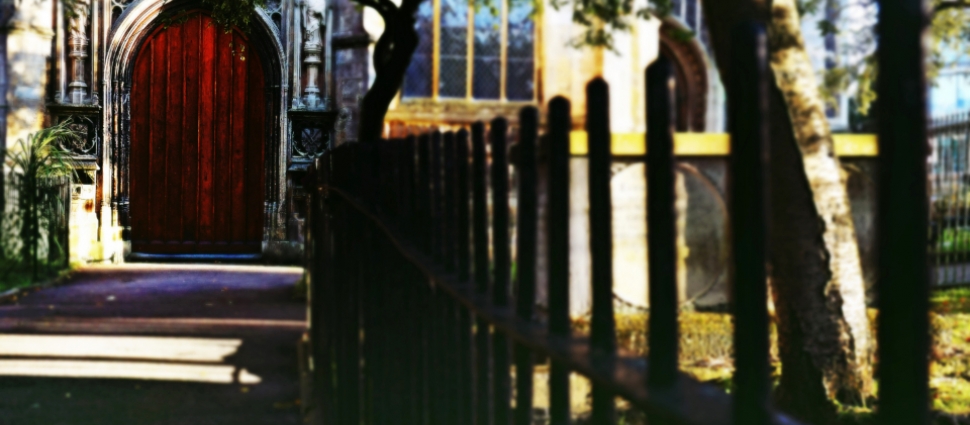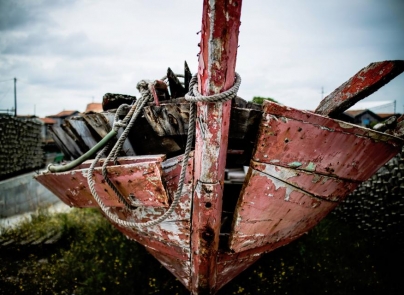Kassia – A Bold and Sensitive Byzantine Poet

Kassia – A Bold and Sensitive Byzantine Poet
Around the year 830, in Constantinople, that Byzantine Empress Euphroshyne organized a bride-show to find a wife for her newly-crowned sixteen-year old son Theophilos. This was a common match-making system of her times.
Kassia – possibly 20 at that time – was one of the contenders. According to the story, she was the first one Theophilos approached, with what could possibly go down as the worst pick-up line in history: “Through a woman, evils came to man.” It was probably a reference to Eve. Why he chose it as his first line remains a mystery.
Kassia’s answer was quick: “Through a woman, better things began.”
If the references were theological, she was right. If sin came into the world through Eve, Christ, the only Remedy to sin, came through Mary.
In any case, Theophilos was not impressed with the answer, and chose another contestant, Theodora. According to the story, he later regretted and expressed his love to Kassia.
Many speculations have been made about the feelings of this potential couple. But, given the fact that Theophilos and Kassia took opposite sides in a major theological debate of their times (the legitimacy of images in worship), their union might have created great difficulties.
This debate had been heated for some time, with defenders of images (iconodules) claiming that images reminded Christians of Christ’s incarnation, and opposers (iconoclasts) maintaining that only Scriptures can correctly represent Christ as both God and man.
Some Byzantine emperors had issued a ban on icons. The first ban lasted from 726 to 805, and the second from 814 to 842, ending with the death of Theophilus. During these bans, images were destroyed and iconodules were persecuted. Kassia, who sided with the iconodules, helped a man who had been imprisoned for his beliefs, and suffered beatings for her convictions.
The Heinousness of Sin and the Greatness of God’s Mercy
By the end of the ban, in 843, Kassia founded a convent in Xerolophos, Constantinople’s seventh hill, and became its abbess. Besides leading other nuns in devotions and good works, she encouraged learning and music. Coming from an aristocratic family, she had probably received a good education in many academic areas, including theology, philosophy, and literature.
Today, she is mostly known as poet, composer, and hymnographer. In fact, she is the only woman whose works are included in the Byzantine hymnals. Her talents were encouraged by others, including the renowned abbot Theodore the Studite, who corresponded faithfully with her and was greatly impressed by her knowledge and wisdom. Most of what we know about her life is gathered from her letters.
Her most famous poem, often known as the “Hymn for Holy Wednesday,” is also included in Anglican hymnals. It recounts the story of the sinful woman who anointed Jesus’s feet not long before his arrest and crucifixion (see Mat. 26: 6-13; Mark 14: 3-9; Luke 7: 36-50).
O Lord, the woman fallen among manifold sins,
Perceiving Thy divinity
Assumes the office of myrrh-bearer
And, mourning, beareth myrrh to Thee before the day of Thy burial,
Saying, Woe is me, for night is about me
The sting of passion twilight and moonless dark,
Even love of transgression.
Accept, I entreat, my tears’ fountains,
Who in vapours aloft drawest the waters of Ocean.
Bow down, I pray, and give ear to my heart’s bitter groanings,
Thou who didst bend the heavens, emptying Thee of Thy glory.
I will kiss Thy undented feet,
And will wipe them dry again
With the curling locks of my head,
The feet whose dread sound Eve in Paradise
Heard in her ears, and hid for terror.
The fulness of my sins, and the abysses of Thy judgments
Who can explore, Soul-saver, Deliverer mine!
Turn not Thy sight from Thy servant,
Thou whose compassion is infinite.[1]
This hymn is a fine sample of Kassia’s poetic mastery and sensibility. In the biblical account, Jesus rebuked the Pharisees for condemning this woman, when she had gone far beyond the simple acts of courtesy to guests they should have exhibited: the customary washing of feet, kiss, and anointing of the head. Instead, she had washed his feet with her tears, dried them with her hair, kissed them, and anointed them with the most expensive oil.
But the woman’s actions had an even deeper, prophetic meaning, Jesus said. They were an early anointing for his burial. And Kassia goes even further. She suggests that the woman had perceived Christ’s divinity.
The woman’s lament is so earnest and descriptive that some have assumed Kassia might have experienced an adulterous past. But there is nothing in Theodore’s letters (which seem to date as far back as 816) to even slightly support this supposition.
Most likely, these critics have not experienced in their souls the serious struggle of a conscience awakened by God’s Spirit. As the 4th-century theologian Augustine of Hippo pointed out in his painful conviction over stealing his neighbor’s pears, it doesn’t take a heinous crime to bring about a painful realization of the depth of human sinfulness and the offense it represents to God’s holy nature.
As Augustine before her, Kassia doesn’t simply lament “the sting of passion twilight and moonless dark,” but something more frightful: “even love of transgression.”
Kassia employs a set of contrasting images to evoke powerful reflections. The woman’s downward flow of tears is offered to the One who draws the ocean’s water up to the sky. Her hope that Christ might bend down and listen to her sighs is grounded on the knowledge that He had come down to our level, emptying Himself of His glory (Phil. 2:7), and is reinforced by the beautiful image of heaven bending at His incarnation.
Kassia’s correlation of Christ’s feet with the footsteps of God walking in the Garden of Eden after man’s first rebellion (Gen. 3:8) strengthens both her affirmation of Christ’s divinity and her confidence in His pardon: instead of running from them, as Eve did, the woman is now allowed to wash them, stroke them, and kiss them.
Kassia ends the poem with one last powerful contrast between the fullness of the woman’s sins and the abysses of God’s judgments on one side and God’s infinite compassion on the other. No matter how numerous and extensive her sins, or how abysmal God’s judgments, His compassion, being infinite, surpasses them all.
Other Writings
The empathy and sensitivity Kassia displays in the “Hymn for Holy Wednesday” seems to negate the common belief that she was a strict abbess – a belief which is based on her collection of short and blunt proverbs and maxims. Some of these include a list of things she hated.
I hate a murderer condemning the hot-tempered.
I hate the adulterer when he judges the fornicator.
I hate the leper who drives out the leprous.
I hate a rich man complaining as a poor man.
I hate the poor man boasting as in wealth.
I hate a debtor who sleeps unconcernedly.
I hate the verbose in an unsuitable time.
I hate silence when it is a time for speaking.
I hate the one who conforms to all ways.
I hate the one who does not encourage everyone with words.
I hate one who speaks before examining.
I hate the one who teaches knowing nothing.[2]
Kassia’s second most famous hymn is about Christ’s incarnation, which she perceives as the greatest event in human history. Once again, Kassia employs parallelism, both in words and in music. If Augustus brought much of the western world under his rule, Christ did much more. He crushed the gods of idolatry and brought the gospel to all nations, making of all nations His people;
When Augustus reigned alone upon earth,
the many kingdoms of men came to an end;
and when Thou wast made man of a pure Virgin
the many gods of idolatry were destroyed.
The cities of the world passed under one single rule;
and the nations came to believe in one sovereign Godhead.
The peoples were enrolled by the decree of Caesar;
and we, the faithful, were enrolled in the name of the Godhead,
when Thou, our God, was made man.
Great is Thy mercy; Glory to Thee.[3]
Most likely, Kassia wrote more than the 49 hymns and 261 poetical works that are in existence today. Of her hymns, 23 were incorporated into what became the Triodion and the Menaion, liturgical books of the Eastern Orthodox Church. Translations in English are still scarce, but what is available is definitely worth reading.
[1] The Scottish Review, ed. by Alexander Gardner, Vol 32, London: Paisley, 1898, p. 311
[2] Other Women’s Voices, “Kassia,” 02/14/04, https://web.archive.org/web/20040313044919/http://home.infionline.net/~ddisse/kassia.html
[3] Mother Mary and Kallistos Ware, trans., The Festal Menaion, vol. 12, London: Faber and Faber, 1969, pg. 254





